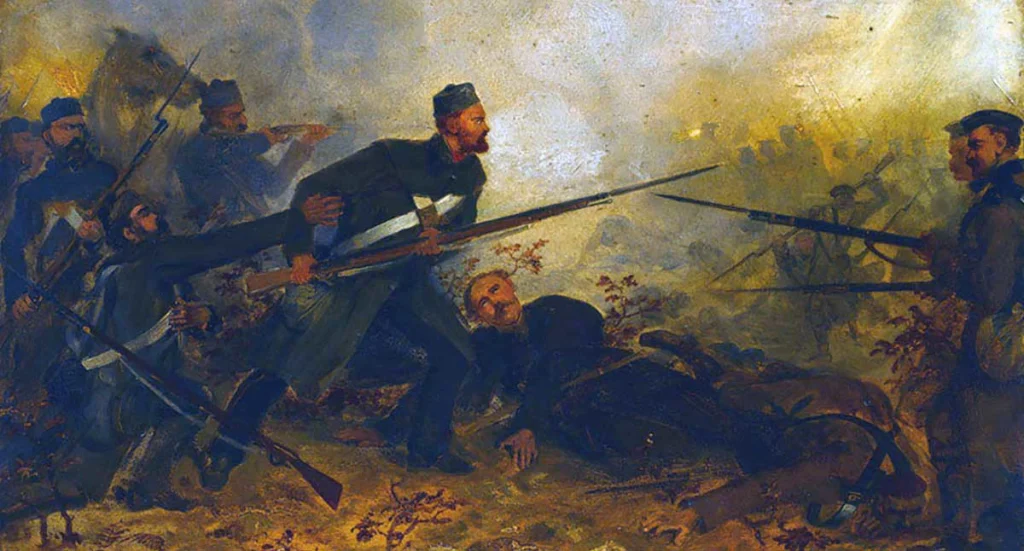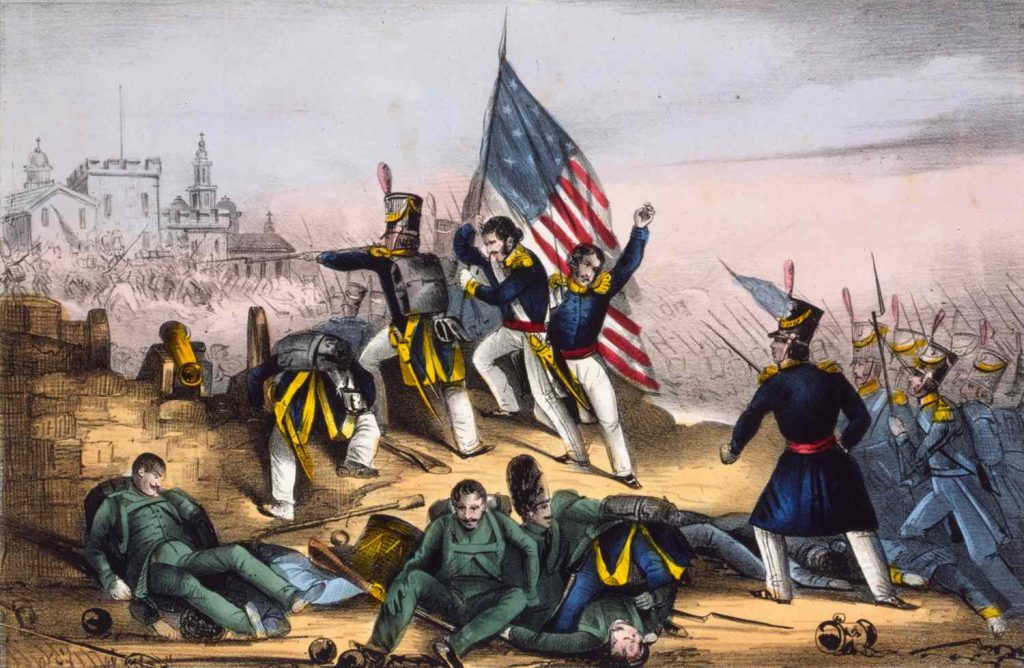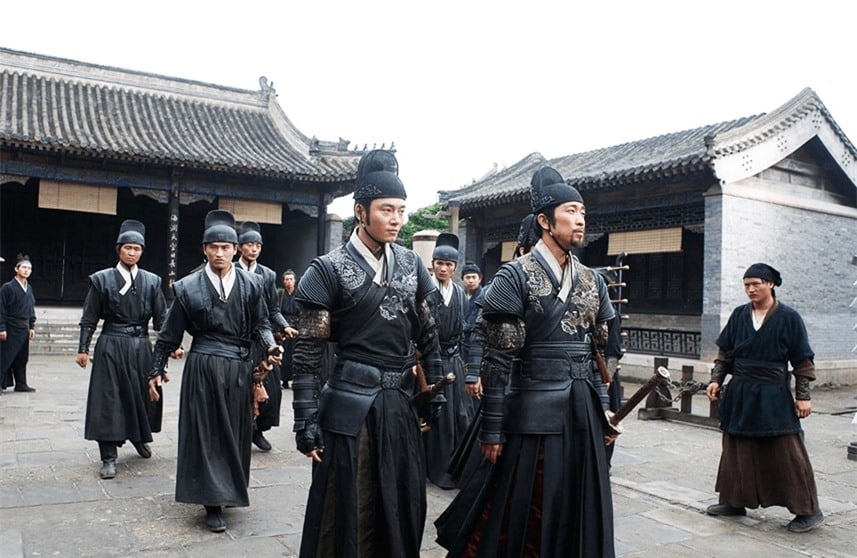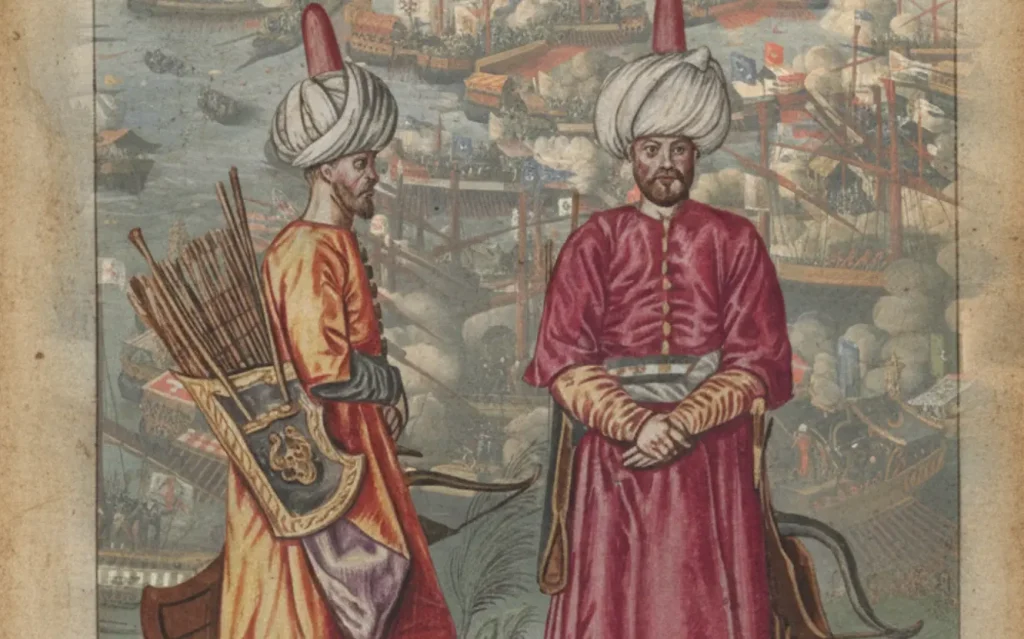Between the late 1400s and around 1700, European infantry shifted from pike-heavy to firearm-dominant formations. Early matchlock arquebuses appeared in modest shares alongside pikes and halberds; by the late 1600s, muskets (increasingly with socket bayonets) were the norm, and pikes faded out almost everywhere.
Why the Mix Changed
- Killing power & range: Firearms steadily improved (better powder, barrels, and locks), outperforming polearms beyond close quarters.
- Tactics & drill: Spanish tercios, Dutch linear tactics, and Swedish salvo fire showed how coordinated musketry could break formations.
- Bayonet revolution: The plug bayonet (late 1600s) and then the socket bayonet (c. 1690s) let musketeers defend themselves at close range, making pikes redundant.
- Standardization: Governments centralized supply and drill, easing the large-scale fielding of muskets.
Country-by-Country: Ratios Over Time
Hungary (Black Army)
- 1477–1488: c. 25% of troops with firearms (arquebuses, handgonnes).
Early adoption inside a still polearm-centric world.
Spain (Italy & the Low Countries)
- 1502–1504 (Italian War): Under Gonzalo Fernández de Córdoba, target mix 50% pikes, 33% swords, 17% arquebuses.
- 1560 (in Italy): 54% pike, 46% firearms.
- 1601 (in the Low Countries): 44% pike, 56% muskets/arquebuses.
- 1632 (standard company): 68% muskets/arquebuses, 32% pike.
From tercio pike walls to majority shot within a century.
Venice
- 1548 (set proportions): 10% halberds, 30% arquebuses, 60% pike.
France
- French mercenaries in the Italian Wars: regulations called for ~33% arquebuses.
- By 1687 (set ratio): 75–80% muskets, 20–25% pike.
A late but decisive tilt toward firearms before bayonets finish the job.
The German Lands (Landsknechts, Imperial forces)
- 1515 (German mercenary companies): 70% pike, 12% muskets, 12% swords, 6% halberds.
- 1625 (Catholic League infantry): 58% muskets/arquebuses, 36% pike, 6% halberds.
- 1627: 65% muskets, 20% pike, 15% halberds.
- 1641 (Imperial/Roman Empire standard): 66% muskets, 33% pike.
The Thirty Years’ War accelerates firearm dominance.
England
- 1544: 7% firearm-armed soldiers.
- 1588 (Armada era): 42% firearms, 26% pike, 16% billhooks, 16% bows.
Recommended infantry mix then: 40–50% guns, 30–40% pikes, ~20% bows. - Nine Years’ War (1690s): roughly 2 muskets per 1 pike.
Longbow finally eclipsed; pikes in steep decline.
The Netherlands
- 1587 (standardized under William of Orange): 34% pike, 9% halberds, 5% swords, 52% firearms (muskets + arquebuses).
- 1592–1595: ~40% pike, 40% arquebuses, 17% muskets, 3% halberds, ~0.2% two-handed swords.
Dutch linear tactics showcase disciplined volley fire and countermarch drill.
The End of the Pike
- c. 1700: European line infantry are nearly 100% firearm-armed.
- France: drops pikes around 1703.
- Holy Roman Empire: officially ends pike use in 1699.
- Sweden & Russia: hold onto pikes a bit longer, but by the early 1700s both convert fully to socket-bayonet muskets.
What the Weapons Were (Quick Glossary)
- Handgonne / Arquebus: Early handheld firearms using matchlock ignition; arquebus was lighter than the later musket.
- Musket: Heavier firearm with greater punch and (eventually) flintlock reliability; becomes the infantry standard.
- Pike: 4–6+ meter thrusting spear used in dense blocks to deter cavalry and protect shooters—until bayonets made them obsolete.
- Halberd: Polearm with axe blade and hook; useful in close fighting and for sergeants/NCOs.
- Billhook (bill): English polearm with hooked blade; common among militia and yeomanry.
- Longbow: Powerful English/Welsh bow; gradually displaced by firearms due to training time and tactical evolution.
- Plug/Socket Bayonet: Knife fitted into/onto the muzzle; the socket version leaves the barrel clear to fire, enabling all-musket infantry.
Big Picture: The “Military Revolution” Angle
Historians often tie these ratios to the so-called Military Revolution (c. 1560–1660): bigger armies, trace-italienne fortifications, professional drill, and state finance. As states centralized and standardized equipment and training, massed musketry—not individual prowess—became the decisive currency of the battlefield. The socket bayonet completed the transition by letting a single soldier do both jobs once split between pikeman and musketeer.











































